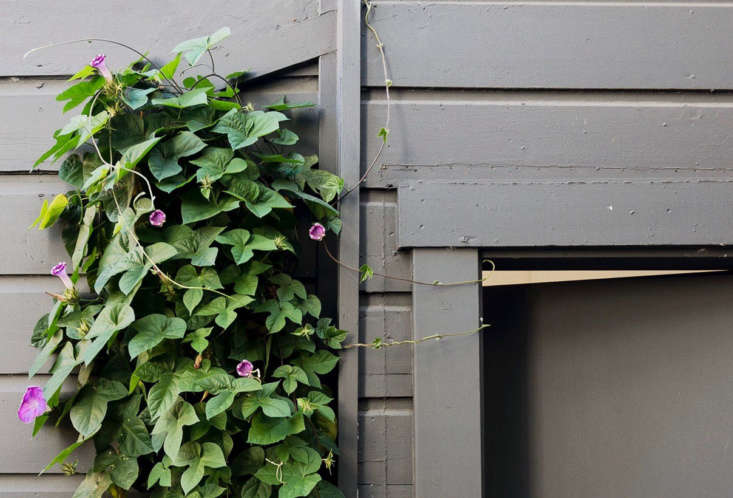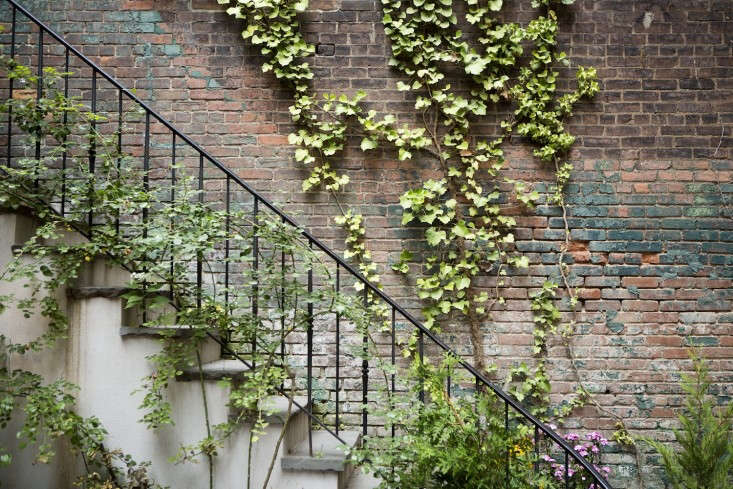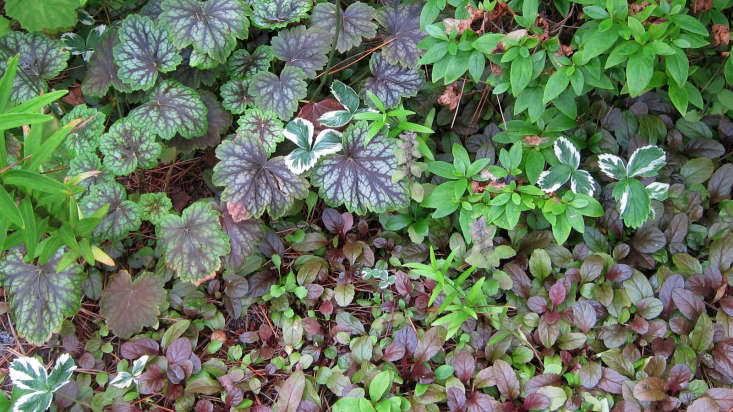Over on our Facebook page, we posed a question: What’s a plant you’ll never grow again? Gardenista readers came out in droves to share horror stories about the plants that took over their gardens, and threatened to take over their lives.
Although it’s important to remember the old adage that “one person’s trash is another person’s treasure” in mind (an invasive pest plant in one USDA growing zone may be a perfectly tame addition to a garden in another zone), we thought it was only right to take a look through the list to see if any themes emerged. And emerge they did. Here, 10 plants our followers mentioned again and again, which you may want to consider at your own risk.
N.B.: Have a plant to add to our list? Let us know in the comments below.
Morning Glory

“I laugh that I paid for the seeds!” wrote one of our Facebook followers. “I literally have hundreds all over my porch and undoubtedly hundreds more will sprout in the spring.” Indeed, morning glory vines can grow as much as 15 feet in a single season and the purple variety, Ipomoea purpurea, has a reputation for escaping from gardens to naturalize where it may not have been wanted. To prevent this, be sure to aggressively deadhead the flowers after they bloom, and remove the entire plant after the first frost kills it (as if it were a weed) and bag it for removal instead of putting the vines into the compost bin.
More morning glory advice: Morning Glory: A Field Guide to Planting, Care & Design.
Wisteria

While wisteria-haters admitted they find the vine beautiful, they echoed the sentiment of garden designer Tim Callis: “Deep down inside, it’s a thug. It wants to conquer the world.” Keeping it (and yourself) happy means pruning often during the growing season and being prepared to clean up the seed pods, which have a tendency to fling themselves to nearby soil, where they may germinate and spread. Plant at your own risk to avoid being the follower who begged, “Tell me everything you know about killing wisteria!”
More wisteria advice: Wisteria: A Field Guide to Planting, Care & Design.
Mint

Mint is the beginner’s best friend—and worst enemy. The herb manages to thrive even while being neglected (and perhaps in spite of that fact), and its strong root system can be invasive if it’s left to its own devices. (According to one follower, mint “sprints out of the garden bed and across the yard with its evil many-armed roots.”) Our recommendation: confine mint to a container if you don’t have room for it to roam and reap the benefits of this aromatic herb in your kitchen and DIY skincare recipes.
More mint advice: Mint: A Field Guide to Planting, Care & Design.
Brussels Sprouts
Not invasive, but followers report that they’ve found Brussels sprouts difficult to grow, and that theirs never matured past marble size due to a short growing season. According to contributor Kendra Wilson in Gardening 101: Brussels Sprouts, the key to Brussels sprouts is to sow seeds indoors in late spring and transplant outdoors six weeks later, after true leaves appear. They’ll be ready to harvest in the fall, and sweeter if harvested after the first frost.
More Brussels sprout advice: Brussels Sprouts: A Field Guide to Planting, Care & Design.
Bamboo

Bamboo is a useful woody grass that can make an attractive privacy hedge for your garden, but you’ll need a plan to contain it before you plant, as its root system has been known to travel underground and pop up several feet from where you expected it. Because of this, it’s best to plant running bamboo varieties in a contained bed or pot, or choose one of the friendlier clumping varieties, which will be slightly better-behaved. If you notice bamboo in your neighbors’ yard, you may want to advise them of this fact as well, to avoid the horror story one of our followers shared, where a neighbor’s interloping bamboo plant plotted a hostile invasion by traveling more than 40 feet underground into her yard.
More bamboo advice: Bamboo: A Field Guide to Planting, Care & Design.
Chives

According to our follower: “I took leave of my senses 15 years ago and sprinkled an entire film canister of garlic chive seeds in one bed. We are still fighting the things. We use flame weeders, hand weeders, and very bad language and we still have them everywhere.” On the plus side, chives repel certain pests like deer, and attracts bees. Our advice: plant with intention to avoid having to resort to bad language.
More chive advice: Chives: A Field Guide to Planting, Care & Design.
English Ivy

Ivies are generally well-behaved in their native environments (Asia, Europe, and Africa, depending on the species), but when transplanted elsewhere, the lack of ecological checks can allow them to be invasive pests. Not surprising, then, that English ivy (H. helix) is a royal terror in North America, prompting comments like “English ivy is the absolute worst!” and “Will no one rid me of this meddlesome plant? A flame thrower?” and “Worst garden mistake I’ve ever made.” Though it looks beautiful and scholarly climbing walls, ivy’s enthusiastic roots can penetrate cracks in mortar and pry stones and bricks apart if not carefully monitored.
More ivy advice: Ivy: A Field Guide to Planting, Care & Design.
Asparagus Fern

Although we’ve sung its praises as a houseplant, asparagus fern has sharp thorns and is toxic to dogs and cats. Unlike true ferns, which spread by spore, asparagus fern spreads by seed and is considered an invasive weed in some parts of North America and New Zealand. One of our followers lamented its seed-spreading, noting that she has never planted asparagus fern, but high winds scatter seeds in her yard.
More advice on asparagus fern: Gardening 101: Asparagus Ferns.
Ajuga

Ajuga (also known as bugleweed) is a fast-growing perennial ground cover that’s useful for smothering weeds, but the qualities we most appreciate about it can also mean it can be overly enthusiastic and smother desirable plants. To control it in the garden, consider planting it on the edge of a rock wall or in between pavers, or in a shady area where other plants don’t thrive.
More advice on ajuga: Ajuga: A Field Guide to Planting, Care & Design.
Pampas Grass

Pampas grass can be a showstopper with its 13-foot-tall white plumes, but one of our followers cautions that the variety she planted (we’d hazard a guess it was Cortaderia jubata) was razor-sharp and dangerous due to its massive size. If you are going to consider pampas grass, choose feathery Cortaderia selloana, which is much easier to control and less invasive than other species.
More advice on pampas grass: Pampas Grass: A Field Guide to Planting, Care & Design.
Starting your first garden? Steer clear of the plants above and read these instead:
- Your First Garden: How to Start a Garden for Practically Free
- Your First Garden: 10 Compelling Reasons to Plant a Container Garden
- Your First Garden: The Easiest Vegetables to Grow









Have a Question or Comment About This Post?
Join the conversation